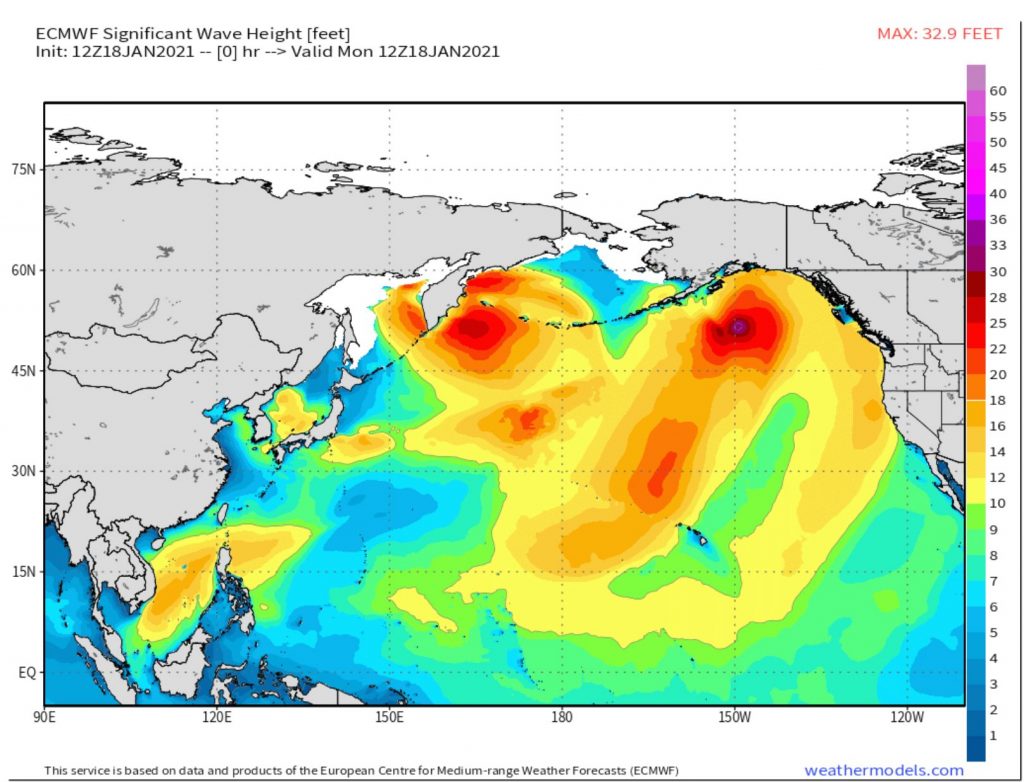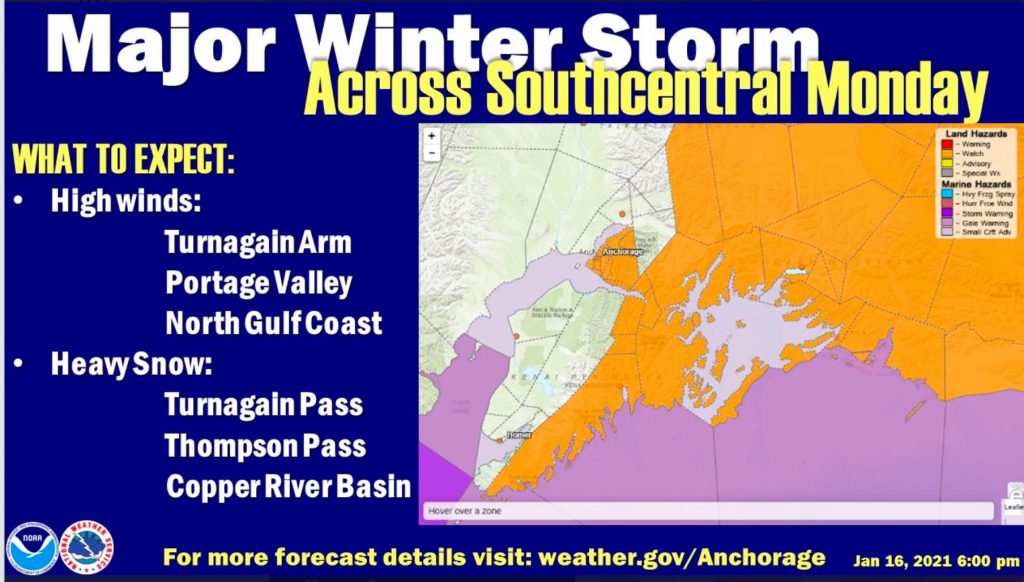
Another major storm carrying high winds, drenching rain and heavy snow, is headed for the Pacific Northwest, as if the extreme Northern Pacific extratropical cyclones were becoming a new normal.

The new powerhouse Gulf of Alaska storm is pounding our 49th state with high winds, heavy coastal rains and buries the Chugach Mountains, which line the immediate southern Alaska coastline, with feet of snow inland.
Just another January day in Alaska: 966hPa low smashing into the the southern Kenai Peninsula. Excessive rain, snow, wind and warmth we got. Cold, not so much. #akwx @Climatologist49 @capture907 @DaveSnider pic.twitter.com/EtiLR9EpN2
— Rick Thoman (@AlaskaWx) January 18, 2021
Mountaintop snow model estimated are in the 60 to 80″ of snow range. It’s these snows which produce the mammoth glaciers for which the region is noted… And they will probably grow amazingly this winter 😉, like in British Columbia, in Greenland, and in the contiguous United States.
Here are several satellite animations of the storm and satellite estimates of wind speeds acoompanying the system out over the Gulf of Alaska.

Also posted is a plot of observed peak wind gusts since midnight, with some buoys recording hurricane intensity winds near 80 mph.

Huge waves of more than 32 feet have also been forecast by models.

The storm’s precipitation is being super-fueled by a Pineapple Express “atmospheric river.”



Here’s an animated view of the deep moisture in the atmospheric river produced by CIMSS (the Cooperative Institute for Meteorological Studies) at the University of Wisconsin-Madison:
A quick moving #atmospheric river will impact SEAK through Monday with heavy rain, strong wind gusts and heavy snow at high elevations. #akwx .@UWCIMSS pic.twitter.com/A0FWuibzwQ
— NWS Juneau (@NWSJuneau) January 18, 2021
The Gulf of Alaska is home to some of the most powerful storms on Earth.
These extreme weather events develop because of the extraordinary temperature variations which develop as cold air pours off Siberia over the comparatively warmer waters of the North Pacific and the huge temp spread between temps on the Alaska mainland and the comparatively “waters” of the Gulf of Alaska.
If you have some pictures of the aftermath of this insane storm in Alaska, please post them in the comments below. More extreme weather events on Strange Sounds and Steve Quayle. [Facebook]












Almost moved to Alaska. Had a friend in commercial fishing. I pray you all stay warm, and catch lots of delicious fish. My favorite food is seafood. Fished all my life too. Love fishing. Love eating those sockeye, rockfish, and halibut. Yum, Yum.
???